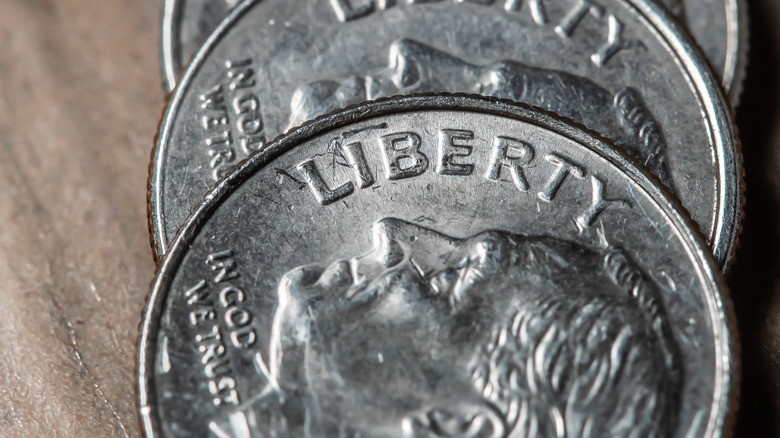Where The Phrase 'Dime A Dozen' Comes From
Many of the quaint sayings and turns of phrase that Americans use in 21st century English are based in money. For example, per The Franklin Institute, Benjamin Franklin is falsely credited with saying, "A penny saved is a penny earned," now a worn-out old platitude that has lost all meaning. Similarly, something of trifling or dubious value may be referred to as "two-bit," an amount of money that eventually came to represent a quarter of a dollar, as Almanac explains. And the phrase "drop a dime (on someone)" — which is to say, to rat them out to the authorities — emerged in prison parlance, according to Urban Dictionary, when someone literally had to drop a dime into a pay phone in order to make a phone call.
Another dime-based phrase is "a dime a dozen," which at one time meant something completely different from what it means now and had to do with advertising.
A dime a dozen was a good deal
These days, a dime is a trifling amount of money. Ten cents are, collectively, approximately 1.37% of the hourly federal minimum wage in the U.S. (per U.S. News & World Report), and if you found one on the ground, it would be hardly worth the effort to even bend over and pick it up. As such, to say something costs or is worth "a dime a dozen" suggests that it's trivial or worthless or, at the very least, common and abundant, as Reader's Digest notes.
Two centuries ago, however, things were different. When the dime was invented in 1796, that kind of money had considerably more purchasing power than it does today. Further, it made a good touchstone for advertising: goods, such as eggs, were advertised as "a dime a dozen," suggesting that the buyer was getting a good deal. Over the decades, however, as the value of money and goods shifted, so did the meaning of the phrase.

